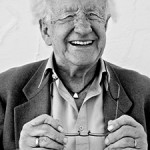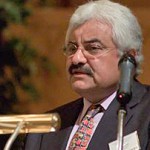Archive for the ‘Nonviolence’ Category
TFF PressInfo # 320 – Burundi: Denying or hoping won’t do
By Jan Oberg
Virtually everyone with an expertise in humanitarian crisis has warned about the unfolding catastrophe these very days in Burundi – the head of UNHCR, former UN Humanitarian chief Jan Egeland, the UN Secretary-General and his envoy, the International Crisis Group, specialists on Burundi, human rights organisations such as Human Rights Watch, civil society organisations inside Burundi, etc. TFF did it in PressInfo 319 of April 29, 2015.
Everyone who cares will see all the red lamps and hear the alarm bells. We have a history of genocide in this country and neighbouring Rwanda just a few years ago. There is something to build our early warnings on. But who is listening? Who is taking action, serious political action?
There have been meetings in the capital Bujumbura, regional leaders, the UN Envoy and a US Ambassador have met with the president and put pressure, urged, expressed concern or appealed. Unfortunately, it seems to be a display of powerlessness and lack of real political will.
This tired diplomacy might even convince the Burundian president that he can safey continue his stubborn policies because – and that’s his advantage – the country called Burundi is of so little real interest to anyone that those who could do something turn their heads and pretend they just don’t see.
We may of course sit and wait. Hoping it will all miraculously be good again tomorrow. Here are some more or less realistic hopes: Read the rest of this entry »
The West against itself
By Johan Galtung
Jondal, Bergen, Kristiansund – Norway
The West – North America and Europe to somewhere in Mexico and Ukraine – declines, outcompeted economically, defeated militarily, confronted politically, contested culturally. But still strong on all four, with much to offer in a more egalitarian world. There should be no need to fall further by working against itself.
Take the 70th anniversary demarcation of the victory over nazism, take thousands of Africans drowning in the waters around Lampedusa, Italy, take the Islamic State, take Ukraine – and a country up there in the high North of Europe, Norway. Elections have moved the country from “red-green” to “blue-blue” coloring of the same color blind foreign policy: follow Washington, Our Father, lest Satan should come.
Yes, the Red Army came and liberated Kirkenes 25 October 1944, the northernmost city. Everybody knows Operation Barbarossa, Hitler’s three-pronged attack toward Leningrad (the siege), Moscow (to beat–Napoleon?) and Caucasus (oil); but not the war for the ice-free harbor of Murmask, from Kirkenes. King Haakon VII, a Dane elected king in 1905, made a remarkable speech in London, distributed in leaflets through the air:
“Fear of Russians is not a recent phenomenon. New was the fear of bolshevism, added after the Russian revolution. But up till this date we are missing the slightest proof that Russia has had aggressive designs on Norway.
What we are not missing are the proofs that the fear of Russians and bolshevism is propagated by powers and groups that themselves had aggressive designs on Russia. The proofs are abundant in the political history from 1918 till today.”
Poland lost 20% of its population; the Soviet Union 27.1 million, 16%, with 1,710 cities and 70,000 villages erased; UK 1.1%; USA 0.4%; Norway 0.32%. The Soviet Union may have lost more soldiers close to Kirkenes against Nazism than Norway all over Norway during the war. Read the rest of this entry »
TFF PressInfo 317: Yemen – The mainstream narrative is grossly misleading
By Jan Oberg, TFF director
Lund, Sweden, April 24, 2015
Double standards
A coalition led by Saudi-Arabia and supported by Western leaders has been bombing Yemen for about a month; it’s a clearcut international aggression and an extremely a-symmetric conflict.
But we’ve heard no calls for a ‘humanitarian intervention’ by NATO or a no-fly zone to prevent the now more than 1500 bombing raids from contining and hitting also civilian targets.
It’s not that international law is blatantly violated; sadly that has been seen before. It is the roaring absence of a clear condemnation by the UN, EU/NATO countries – usually calling themselves ‘the international community’ – and by the Western mainstream media.
Substance plays a minor role. What is right or wrong depends on who is doing what. This war is OK because the Saudi dictatorship and its coalition members are Western allies and armed by NATO countries.
The convenient but wrong narrative
Furthermore, the narrative has twisted this into a proxy war between Saudi-Arabia and the West on the one side and Iran, alone, on the other side blaming the latter for its alleged support to the Houthis.
It is no wonder that a group of eminent scholars on Yemen have published an open letter in Washington Post in which, among other things, they condemn the Saudi-led war on Yemen. Read the rest of this entry »
How the US contributed to Yemen’s crisis
By Stephen Zunes
Washington’s support for Yemen’s former dictatorship — and of Saudi efforts to sideline the country’s nonviolent pro-democracy movement — helped create the current crisis.
As a Saudi-led military coalition continues to pound rebel targets in Yemen, the country is plunging into a humanitarian crisis. Civilian casualties are mounting.
With U.S. logistical support, the Saudis are attempting to re-instate the country’s exiled government — which enjoys the backing of the West and the Sunni Gulf monarchies — in the face of a military offensive by Houthi rebels from northern Yemen.
None of this had to be.
Not long ago — at the height of the Arab Spring in 2011 — a broad-based, nonviolent, pro-democracy movement in Yemen rose up against the U.S.-backed government of dictator Ali Abdullah Saleh. If Washington and Saudi Arabia had allowed this coalition to come to power, the tragic events unfolding in Yemen could have been prevented.
The movement had forged an impressive degree of unity among the various tribal, regional, sectarian, and ideological groups that took part in the pro-democracy protests, which included mass marches, sit-ins, and many other forms of nonviolent civil resistance. Leaders of prominent tribal coalitions — as well as the Houthis now rebelling against the government — publicly supported the popular insurrection, prompting waves of tribesmen to leave their guns at home and head to the capital to take part in the movement.
These tribesmen, along with the hundreds of thousands of city dwellers on the streets, were encouraged to maintain nonviolent discipline, even in the face of government snipers and other provocations that led to the deaths of hundreds of unarmed protesters.
The Obama administration, however, was more concerned about maintaining stability in the face of growing Al-Qaeda influence in rural areas. Secretary of Defense Robert Gates acknowledged that Washington had not planned for an era without Saleh, who had ruled the country for more than three and a half decades. As one former ambassador to Yemen put it in March 2011, “For right now, he’s our guy.”
Powerful nonviolent resistance to armed conflict in Yemen
By Stephen Zunes and Noor Al-Haidary
As with the initial uprising against the Saleh regime four years ago, an unarmed civil society movement rises up to challenge the Huthi militia.
While media coverage of the tragic situation unfolding in Yemen in recent months has focused on armed clashes and other violence, there has also been widespread and ongoing nonviolent civil resistance employed by a number of different actors.
In fact, the most significant setbacks to the Huthi militia in their march southward across the country in recent months have come not from the remnants of the Yemeni army or Saudi air strikes, but from massive resistance by unarmed civilians which has thus far prevented their capture of Taiz, the country’s third largest city, and other urban areas. The resistance efforts have also pressed the Houthis to withdraw their forces from a number of previously-held areas, including universities, residential neighborhoods, and even military bases. This kind of nonviolent resistance by ordinary people is remarkable, but it is not new in Yemen.
Criminalizing war – 20 recommendations
By Johan Galtung
Below 20 points that Johan Galtung now presents for discussion at his lectures and seminars:
1. Japanese Constitution Article 9 or something similar for all states: ‘__forever renounce war as a sovereign right of the nation and the threat or use of force as a means of settling international disputes’.
2. Universal Declaration of Human Rights Article 28 criminalizing war: ‘a social and international order in which the rights and freedoms set forth in this declaration can be fully realized’
3. UD Article 3 “Everybody has the right to life, freedom and security of person” should also apply to cross-border aggression of any kind. Read the rest of this entry »
The geopolitical right of exception at the United Nations
By Richard Falk
The notorious, yet influential, German jurist, Carl Schmitt famously insisted that ‘a right of exception’ was the core reality of national sovereignty. By this he meant that internal law could be put aside by ‘the sovereign,’ inhering as the crux of the relationship between state and society. In this regard international law has no overriding claim of authority with respect to sovereign states, at least from the perspective of statist jurisprudence.
This discretion to ignore or violate law is distinct from submission to law as a realistic adaptation by weak states to political realities or compliance undertaken voluntarily for pragmatic reasons of convenience and mutual benefit.
When the UN was established, it was configured, to appeal both to realist minds who were eager to show that they had learned the lesson of Munich and to those architects of international cooperation that did not want the folly of the League of Nations, seen as a politically irrelevant sanctuary for utopians and dreamers to be repeated in this newly created organization.
To achieve these ends the UN Charter vested only the UN Security Council with the power of decision (as distinct from recommendations), and limited its membership originally to nine states of which the five designated winners of World War II were given both permanent membership, and more importantly, a right of veto.
In effect, the right of veto was a constitutional right of exception embedded in the UN Charter. It formulated the master procedural rule of the Charter as one that allowed permanent members of the Security Council to block any decision that was perceived to be sufficiently against their national interests or those of its friends. Read the rest of this entry »
Gandhi and Mandela: Two South Africans
By Johan Galtung
Mohandas Gandhi invented the nonviolent approach to basic social change, Satyagraha, in South Africa in the early 20th century; Nelson Mandela presided over the birth of a one person-one vote democracy at the end of the century. Both were lawyers, trained in English Common Law; good in the sense of a keen consciousness of what is right and wrong, bad in the sense of a court process identifying who is in the wrong rather than solving underlying conflicts, and wrong in the sense of punishing the wrong-doer; violence rather than cooperation.
Both built on the positive side of law – the indelible rights of the people for whom they were fighting by comparing empirical facts with normative rights; immigrant Indians in the case of Gandhi, original inhabitants in South Africa, the Blacks, in the case of Mandela.
Gandhi (1869-1948) did not live to see equality between Indians and whites in South Africa, but in India, his mother-father land; Mandela (1918-2013) did. They won their struggles – but the societies that emerged still suffer from other and major ones.
A deep culture united them: the culture of law. Read the rest of this entry »
Re-connect the world’s children with Nature
By Kamran Mofid
Here, this Blog, I am calling upon families, educators and community leaders worldwide to become as children and rediscover the benefits of paying attention to nature, and to take action to strengthen children’s connections to nature.
As adults, we should be opening the doors and providing the children and the youth opportunities that fully connect them to the natural environment so they can gain an understanding of the natural world in as many educational and recreational settings as possible. We cannot start too soon!
Today’s children and families often have limited opportunities to connect with the natural environment. Richard Louv called this phenomenon, ‘nature-deficit disorder’ in his influential book, The Last Child in the Woods, and opened our eyes to the developmental effects that nature has on our children.
Continue reading on Mofid’s blog – Globalisation For The Common Good Initiative.
Gandhi and Mao – two Asians
By Johan Galtung
Let us start by summarizing. We are looking at six major leaders of forces and movements shaping centuries – Churchill-Hitler-Stalin-Mao-Gandhi-Mandela – comparing, two at a time. We are looking for similarities and dissimilarities. Some of them are out in the open, in their spoken ideologies. But most of them – maybe the most interesting–are hidden to the untrained eye. There are the similarities when they are from the same civilization and the dissimilarities when different – however much they profess to be on the same or very different lines. The six were themselves hardly aware of this factor.
As Churchill, Hitler and Stalin share the Christian-secular civilization; we would expect anti-Semitism, racism, and little hesitation when killing–by war, starvation (the Lord also did it), by revolution, millions – even with enthusiasm. Deeper down there are deductive reasonings from axioms about race and class and a final state: the British Empire, the Aryan Reich, for one thousand years, and socialism on the way to the final stage, communism forever; run from London, Berlin, Moscow. So we got the triangular Second World War with Moscow entering two alliances of convenience.
Enters Mao. He shares the word “communist” with Stalin (they still use it, long after it disappeared in USSR-Russia). But the Chinese civilization leaves its indelible imprint on that concept, giving the word a very different meaning, commune-ism, common-ism, doing things together, cooperating.
Enters Gandhi. An Asian like Mao, but watch out: there is no Asian civilization. There are West, Central, South–Hindu; Gandhi is here!–Southeast, East–Mao is here!–Asia; all very different–and a sixth, North Asia, Russian Orthodox. Read the rest of this entry »




